A detailed overview of Hobbies Class 12 Exercise, complete with solutions, a summary, and critical thinking answers for NEB English students.
Chapter 11: Hobbies Class 12 Exercise
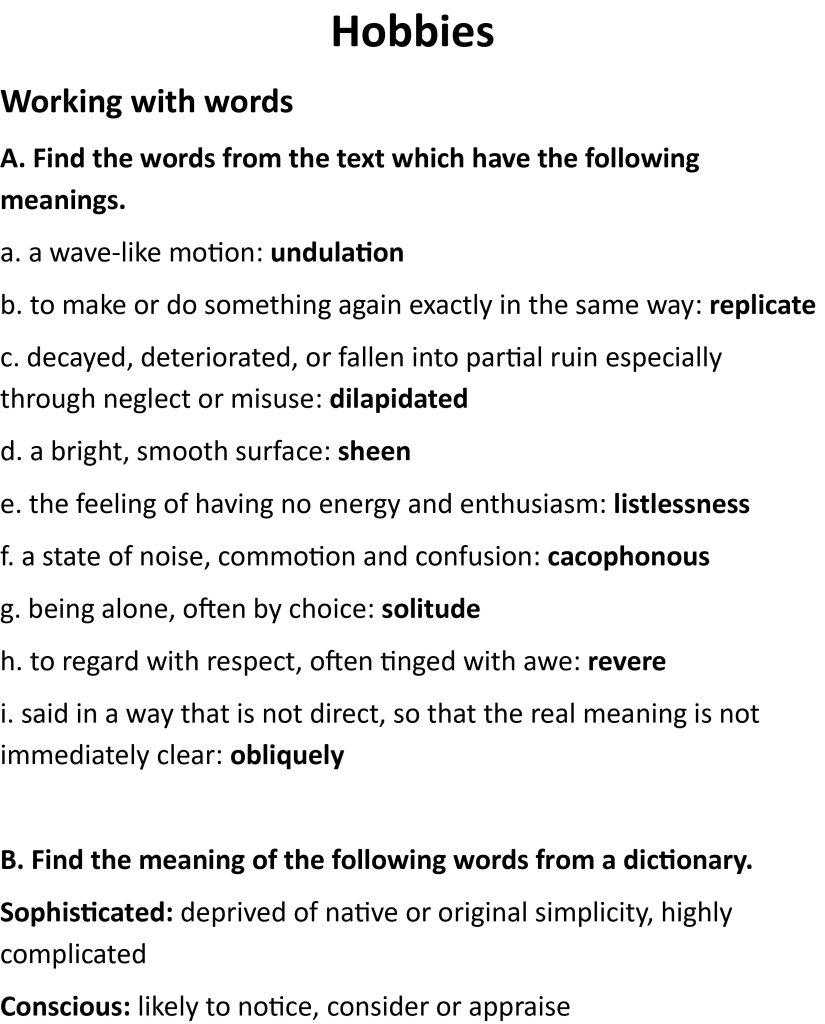

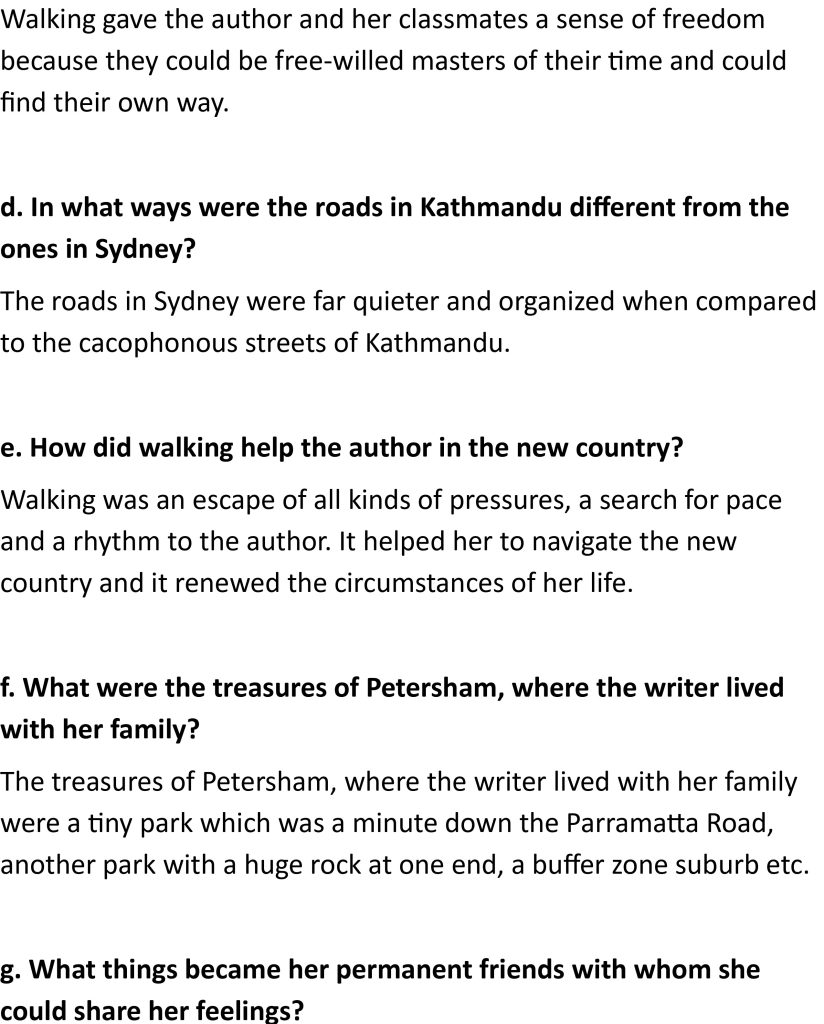
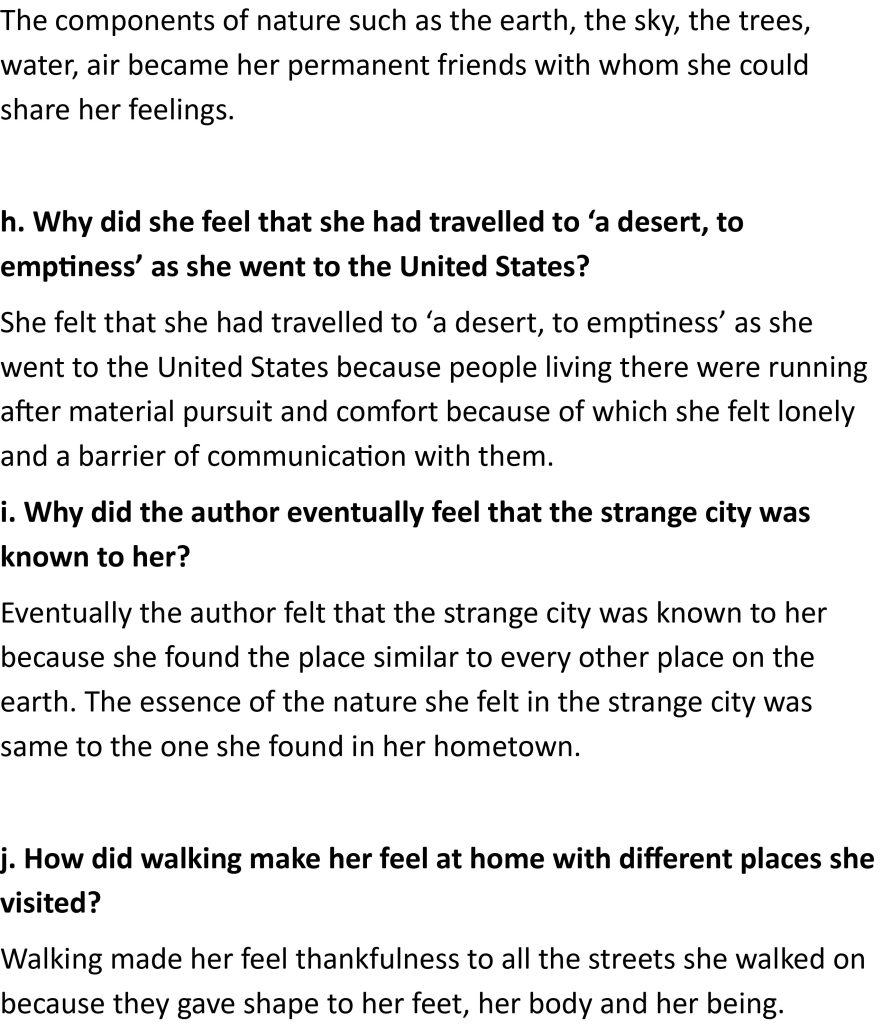
You can continue reading this chapter with our latest English Guide App anytime.

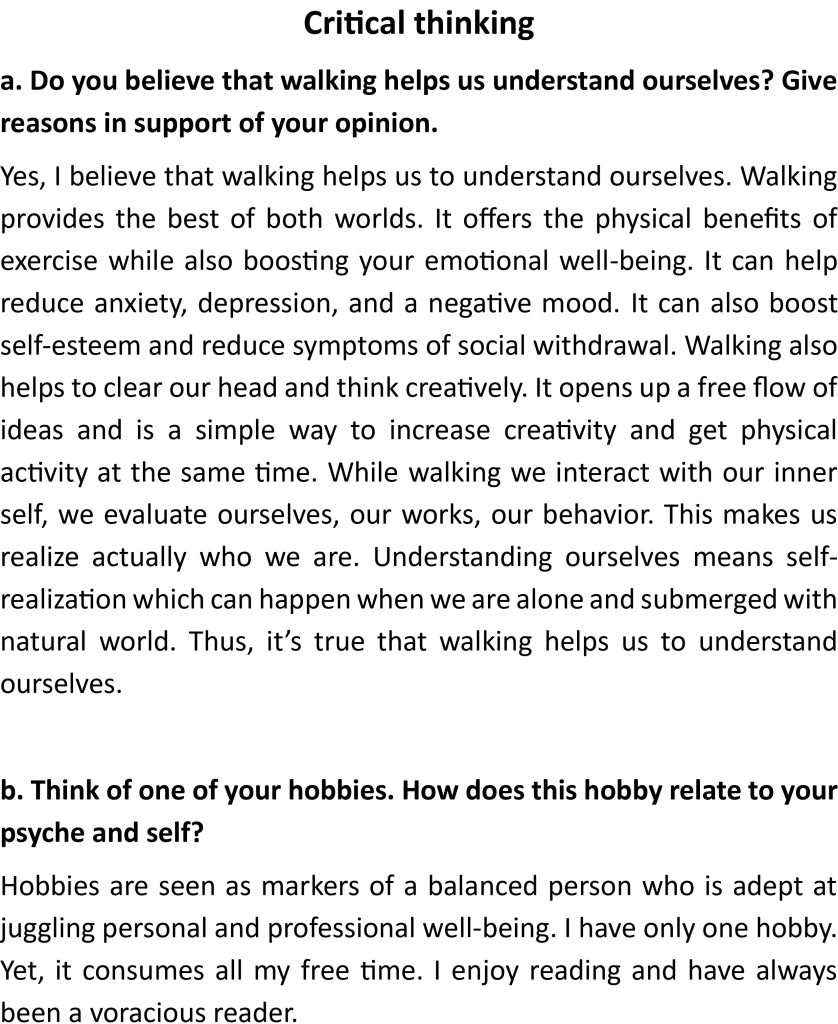
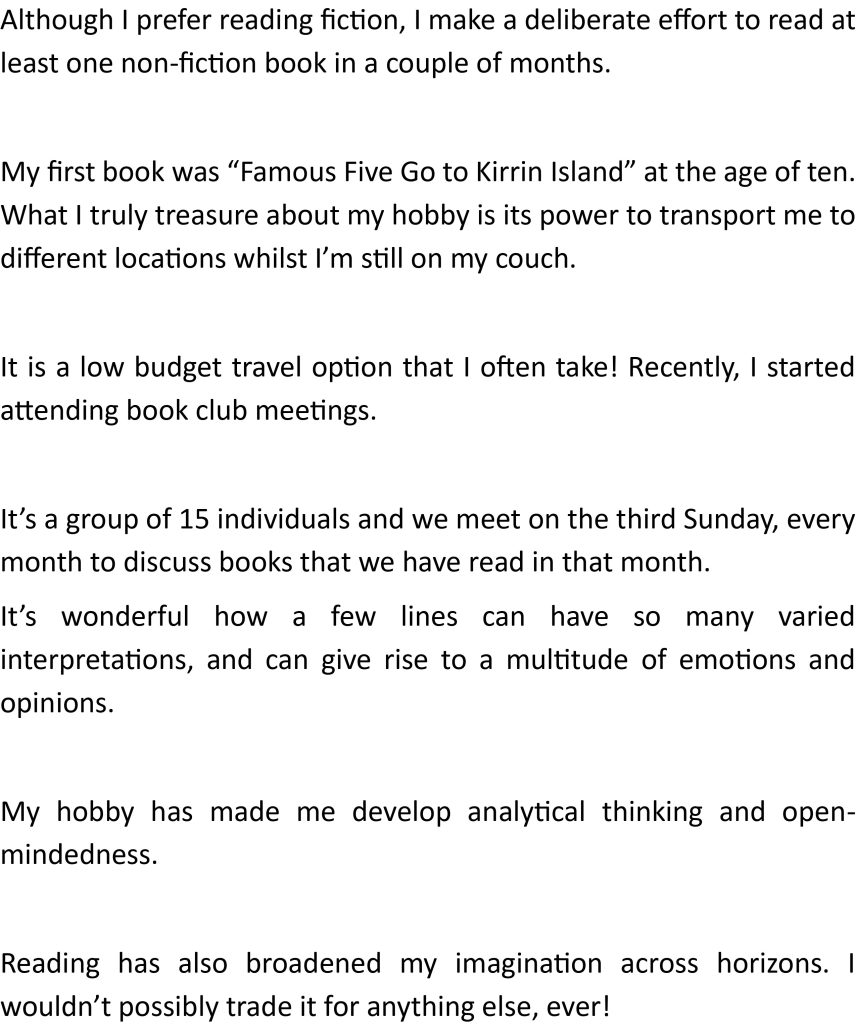
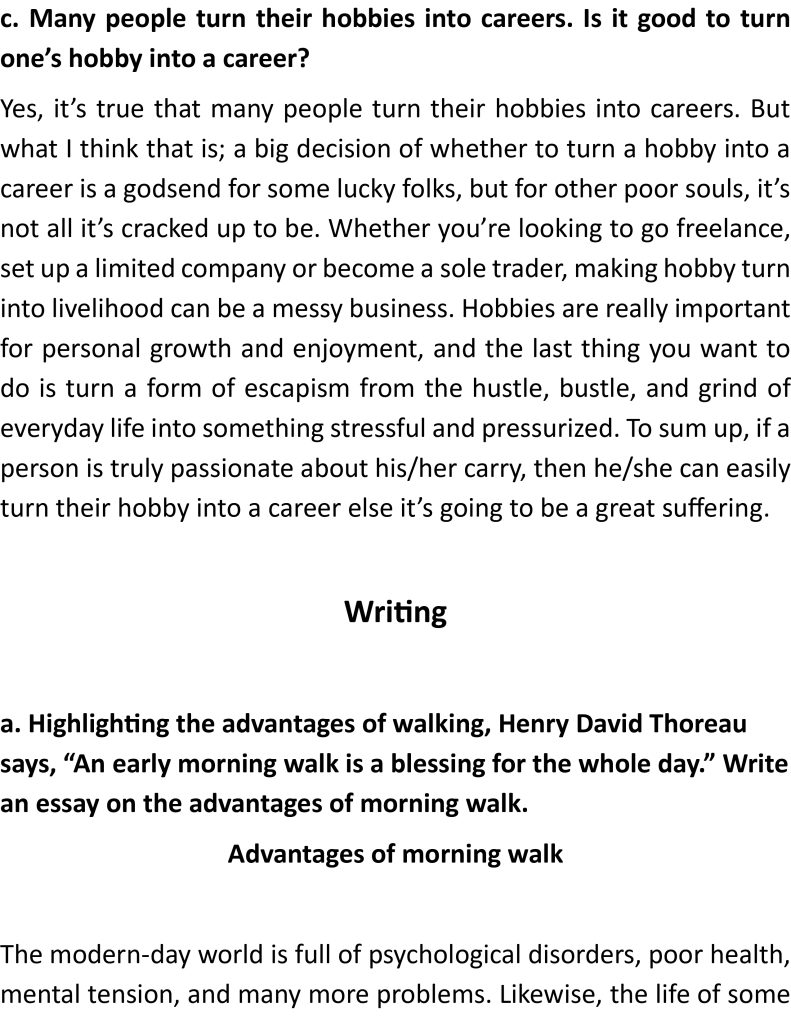
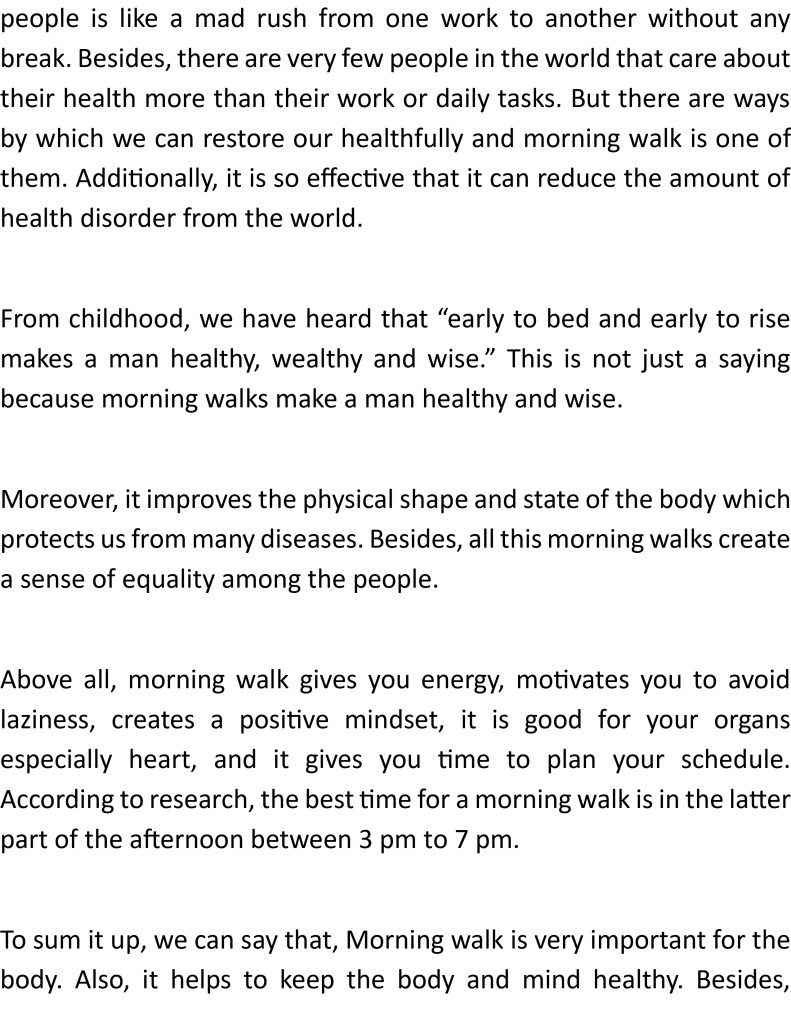




Summary of “Hobbies (On Walking)” (Class 12 English)
In the essay Hobbies, the author reflects on walking as her most cherished hobby, exploring its physical, emotional, and philosophical impacts on her life. Walking provides her with solitude, self-reflection, and connection to nature. From the noisy streets of Kathmandu to the organized paths of Sydney and the isolating silence of the U.S., walking remains a grounding experience. It becomes more than a physical activity — it is a way to understand herself, find peace, and adapt to new places. The author also touches on how hobbies contribute to personal well-being and can even influence one’s career path.
Key Takeaways: Hobbies, Mental Well-being & Self-Discovery
- Walking is a healing and meditative hobby that connects the author with her inner self and surroundings.
- It symbolizes freedom, especially for the young, allowing independence in movement and thought.
- The contrast in environments (Kathmandu vs. Sydney vs. the U.S.) highlights how walking bridges emotional and cultural gaps.
- Nature — trees, earth, sky — becomes a constant companion regardless of geography.
- Hobbies like walking or reading offer emotional escape and mental clarity.
- Turning a hobby into a career can be rewarding but also stressful if passion isn’t sustained.
- Self-awareness and peace can be achieved through consistent engagement with a meaningful hobby.
- The author emphasizes the emotional and spiritual significance of seemingly simple activities.
- Walking helps build a connection with unfamiliar places, making them feel like home.
- The text promotes hobbies as essential for mental health and personal growth.
FAQs – Hobbies Meaning
What is the main theme of the chapter “Hobbies” in Class 12 English?
The main theme is how hobbies, especially walking, contribute to self-understanding, emotional well-being, and a deep connection with nature.
Why is walking the author’s favorite hobby in this Class 12 English chapter?
The author enjoys the rhythm, solitude, and reflection that walking brings, helping her deal with life changes and connect with her surroundings.
How does the chapter “Hobbies” relate to self-discovery in Class 12 English?
It shows that walking helps the author understand herself better by offering time to think, observe, and emotionally decompress.
What contrast does the author make between roads in Kathmandu and Sydney?
Kathmandu’s roads are noisy and chaotic, while Sydney’s are quiet and structured, reflecting how environment shapes experience but not the essence of walking.
According to Class 12 English “Hobbies,” how can hobbies influence our lives?
Hobbies improve mental health, boost creativity, foster independence, and even serve as career pathways if pursued passionately.
What message does the essay “Hobbies” convey to Class 12 students?
It emphasizes that nurturing a hobby leads to personal growth, emotional balance, and resilience, especially in unfamiliar environments.
Why did the author feel lonely in the United States, as mentioned in Class 12 English?
She felt isolated due to the materialistic lifestyle and lack of genuine emotional or spiritual connection among people there.
What are the ‘permanent friends’ the author mentions in the chapter “Hobbies”?
Nature elements like trees, water, air, and sky are described as her constant companions that comfort and ground her.
How is the idea of solitude presented in Class 12 English’s “Hobbies”?
Solitude is portrayed positively — as a space for reflection, inner peace, and intimate engagement with nature and thoughts.
Can walking be considered more than a hobby, based on this Class 12 English chapter?
Yes, walking becomes a spiritual practice and a form of therapy that shapes the author’s identity and worldview.

Leave a Reply